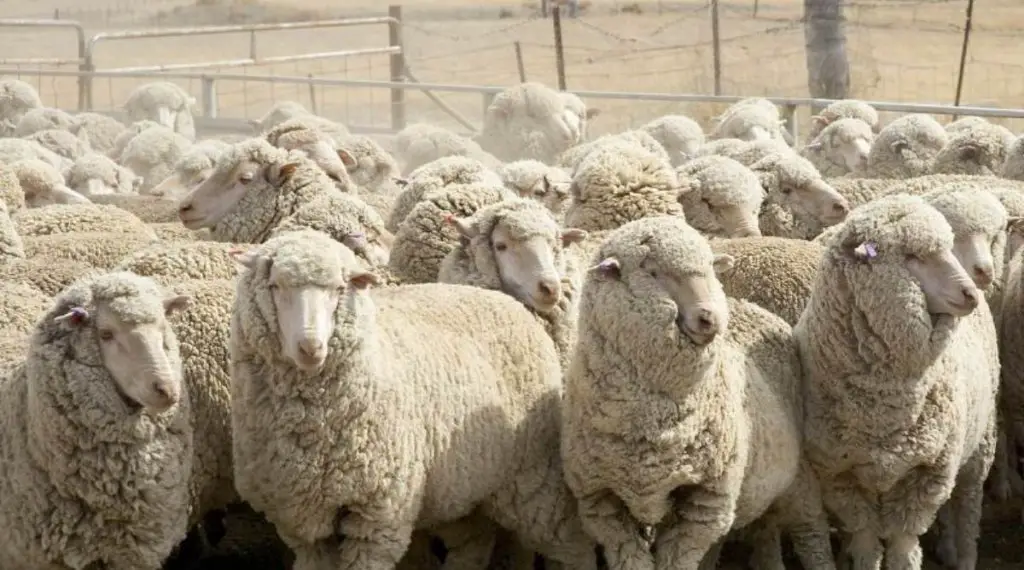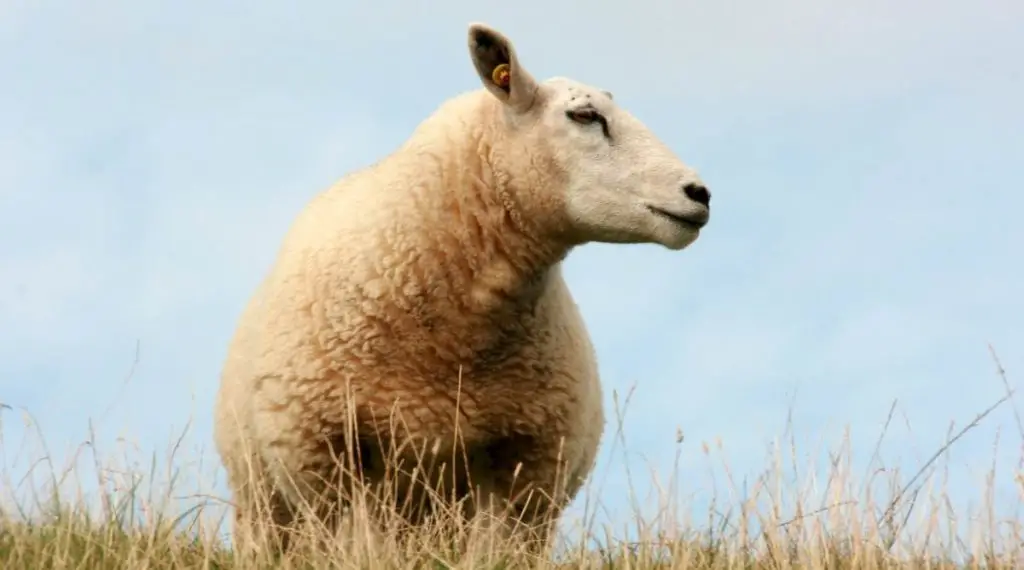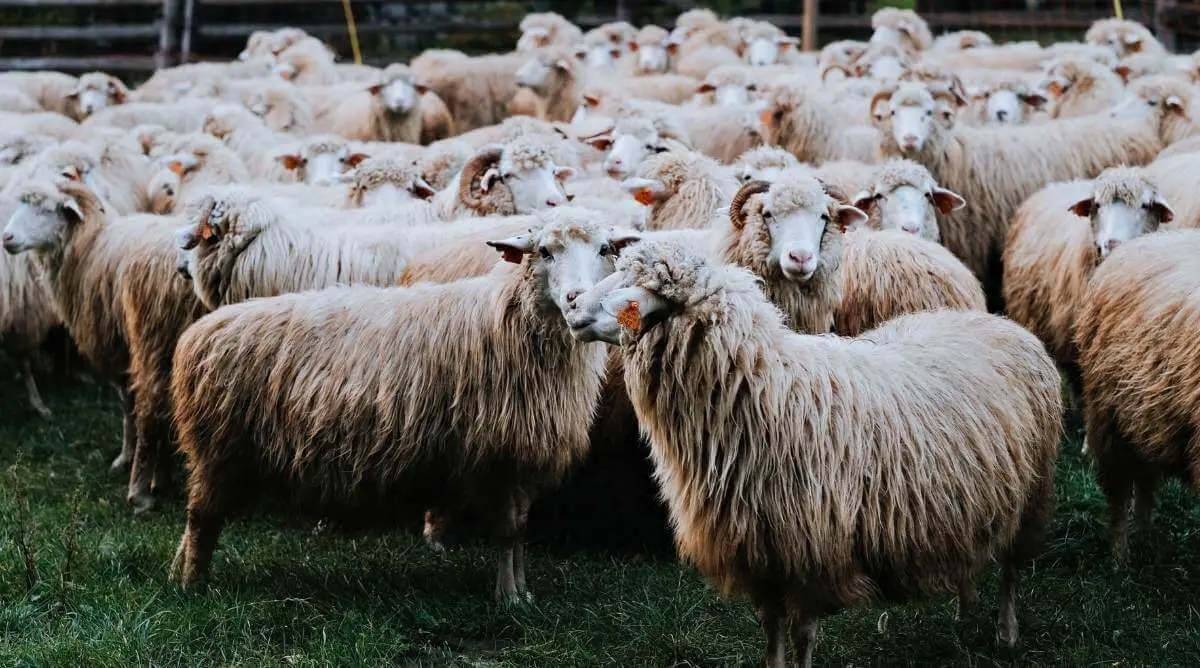There are more than 200 breeds of sheep—but not all of them produce the best wool. Breeders have identified a handful of breeds as the best for wool production. These are known as "wool sheep" and include breeds like Merino and Debouillet, which produce high-quality wool for commercial use.
Raw wool characteristics determine whether or not a specific breed has what it takes to earn a coveted spot in wool production. Key factors include:
- Diameter of the fibers
- Curvature of the fibers
- Lack of pigmented fibers
- Staple length
- Staple strength
- Clean fleece yield
- Spinning fineness
Many species of sheep yield high quality and vast quantities of wool with very little maintenance required.
Table of Contents
Merino

Merino sheep are well-known for their highly-priced, high-quality wool. Their wool fibers are generally between 17 and 22 microns. However, some strands are as fine as 12 microns, which is comparable to the delicate strands of a cobweb. Merino sheep wool is exceptionally soft.
There are many types of Merino sheep. Some of the most commonly known variations include:
- Barolo
- Peppin
- Delaine
- Saxon
Fibers spun from the soft, luxurious Merino sheep wool is ideal for creating babywear or garments worn close to the skin.
Debouillet
This breed of sheep is hardy and well adapted to the vast and varied conditions in the Western US regions. The Debouillet is the result of a successful cross-breeding between Delaine-Merinos and Rambouillets. The fleece yielded by the Debouillet sheep ranges between 19 and 24 microns and is exceptionally soft and fine, characterized by elasticity and outstanding felting properties.
This wool is well-suited to the creation of babywear, felt, and garments worn close to the skin.
Wensleydale
The large-sized Wensleydale sheep are known for their distinctive blue-grey faces. The wool of the Wensleydale is probably the finest, highest-quality, most lustrous fleece of all the longwool breeds.
The excellent staple length makes this wool breed one of the most profitable on the market. The wool has a fineness of between 30 and 36 microns.
Fibers spun from the fleece of the longwool Wensleydale are perfect for use in outerwear, rugs, and as a mix with upholstery and cloth fabrics.
Rambouillet
This large-bodied sheep is a dual-purpose breed that provides both wool and meat. The wool has a fineness of between 19 and 23 microns and a finer crimp than the wool yielded by Merinos. The fibers are known for their elasticity and excellent loft. Like Merino wool, Rambouillet wool demands a high price due to its use in making fine clothing. Rambouillet wool is one of the best-known wools for felting.
Fibers spun from the soft, elastic Rambouillet sheep wool are best used for babywear, for garments worn close to the skin, and as a blend with other exotic fibers.
Cormo
Cormo sheep originated in Tasmania, Australia. They are more suited to withstand cold and wet conditions than Merino sheep. The wool of the Cormo sheep is known for its heavy fleece weight and stark white, clean appearance.
The fiber fineness ranges between 17 and 23 microns and is known to be luxuriously soft and warm. Their wool is the perfect balance between loft and elasticity. The short length of staple and high crimp can be troublesome for spinners who will struggle to maintain an even tension. Regardless of the hassles experienced by the spinners, the resultant fibers are flawless. Many fashion fabrics are the result of these fine fibers.
Comeback
This Australian sheep is the result of cross-breeding between the Merino sheep with British longwool. Comeback sheep yield fleece that is soft, fine, heavy, and has an outstanding felting quality. Fiber fineness ranges between 21 and 25 microns.
The thread spun from these fibers is suited to hand knitting yarns, felt, and woolen fabrics.
Bond
Bond sheep share characteristics common to Merino sheep and Lincoln sheep. The soft, heavy fleece yields staples that are the longest among the fine wools, with a fineness between 23 and 28 microns. It’s often used when spinning fibers for blankets and knitting wools .
Polwarth
The Polwarth breed is a sub-breed of the Comeback sheep. It’s a dual-purpose breed used for both fibers and meat. Polwarth sheep quickly adapt to damp climates that would typically be difficult for Merino sheep to withstand.
The white, soft, low luster fibers are of average fineness of between 21 and 26 microns, with a reasonably good staple length. The fibers are ideal for use in babywear, knitting yarns, and worsted fabric.
Targhee
Another dual-purpose breed, the Targhee is a commercial breed that is bred for both meat production and wool. The low luster fibers are dense and uniform in fineness, ranging between 21 and 25 microns.
Wool from Targhee sheep is often used for garments, both knitted and woven, that are worn close to the skin.
Teeswater
The Teeswater is a commercial wool breed that is also bred for meat production. When you take into consideration the staple length, staple strength and luster of the fibers, the Teeswater sheep are an excellent wool breed.
Teeswater fibers are often added as a blend to other fibers to add strength and sheen to the finished product. While fibers from younger sheep are silky and soft, the older individuals yield fibers that are rough and tough. Fiber fineness among this breed range between 30 and 36 microns. This hardy wool fiber is suited for use in outerwear and rugs.
Cheviot

The Cheviot is a hardy breed that is predominantly a medium-wool, white-faced, hornless sheep from Scotland and England. Cheviots do not have wool on their heads and ears or their legs below the knees and hocks.
Cheviot wool is known for its durability and fiber fineness that ranges between 28 and 33 microns.
The fibers are ideal for use in socks, sweaters, blankets, and the spinning of wool tweeds for jackets.
Romney
The Romney breed is another dual-purpose breed reared for both meat and wool. The hardy breed is extremely popular and is found in almost all the countries where sheep are bred. The semi-lustrous, uniform fibres have more crimp than the average longwool sheep.
The rough grade fibers are between 32 and 39 microns and are unsuitable for garments or clothing worn in direct contact or close to the skin. The yarn has an earthy look and feel. The fibers are best-suited to the creation of outerwear, baskets, rugs, and carpets.
Borderdale
The Borderdale sheep is the product of cross-breeding between the Border Leicester and Corriedale. The Borderdale is a longwool breed that yields comparatively heavy, soft, and lustrous fleece with fibers measuring between 30 and 35 microns. The fiber yielded from this wool is ideal for use in heavyweight apparel.
Bluefaced Leicester
Funnily enough, the Bluefaced Leicester is not blue-faced at all. They produce white wool and are known for having calm demeanors. The fineness of the fibers is between 24 and 28 microns have just the perfect amount of length and crimp, small curls, a lustrous and silky feel to the touch, and a delicate drape.
A standout quality of this wool is how effortlessly it can be dyed.
The fibers are ideal for outerwear, strong fabrics, and fabrics worn close to the skin.
Corriedale
Cross-breeding between longwool rams and Merino ewes resulted in the Corriedale breed. It’s a dual-purpose meat and wool breed that is hardy and easily adapts to various conditions and climates.
The Corriedale produces a fleece that is soft, radiant, and perfectly crimped with a fiber fineness that ranges between 26 and 33 microns.
The fibers are ideally suited to creating worsted fabrics, legwear, and blankets.
Panama
Panama sheep were developed in Idaho. They’re commonly hornless and predominantly white. Their fleece is longer, thicker, and somewhat coarser than that of the Merino sheep breed, with a fineness of between 25 and 30 microns. The fleece is ideally suited to the creation of outerwear and socks.
Panama sheep are a dual-purpose breed known to thrive in harsh conditions. Today, Panama sheep are less common but can still be found in Idaho and Montana in the US.
Finnish Landrace
Finnish Landrace is also commonly referred to as Finn or Finnsheep. It’s a breed known for its hardy adaptability to adverse and harsh climates. They produce fibers that are considered the perfect length with a high, fine crimp and a fineness between 24 and 31 microns.
Finn sheep are known as medium wool sheep but yield fibers with softness and loft when compared with other medium wool breeds. The lack of or low levels of lanolin results in a relatively clean fleece. Finn wool is best used for outerwear, blankets, or as a blend with other fibres.

